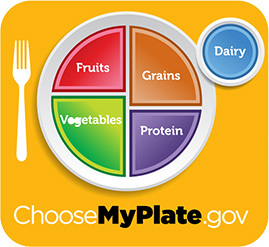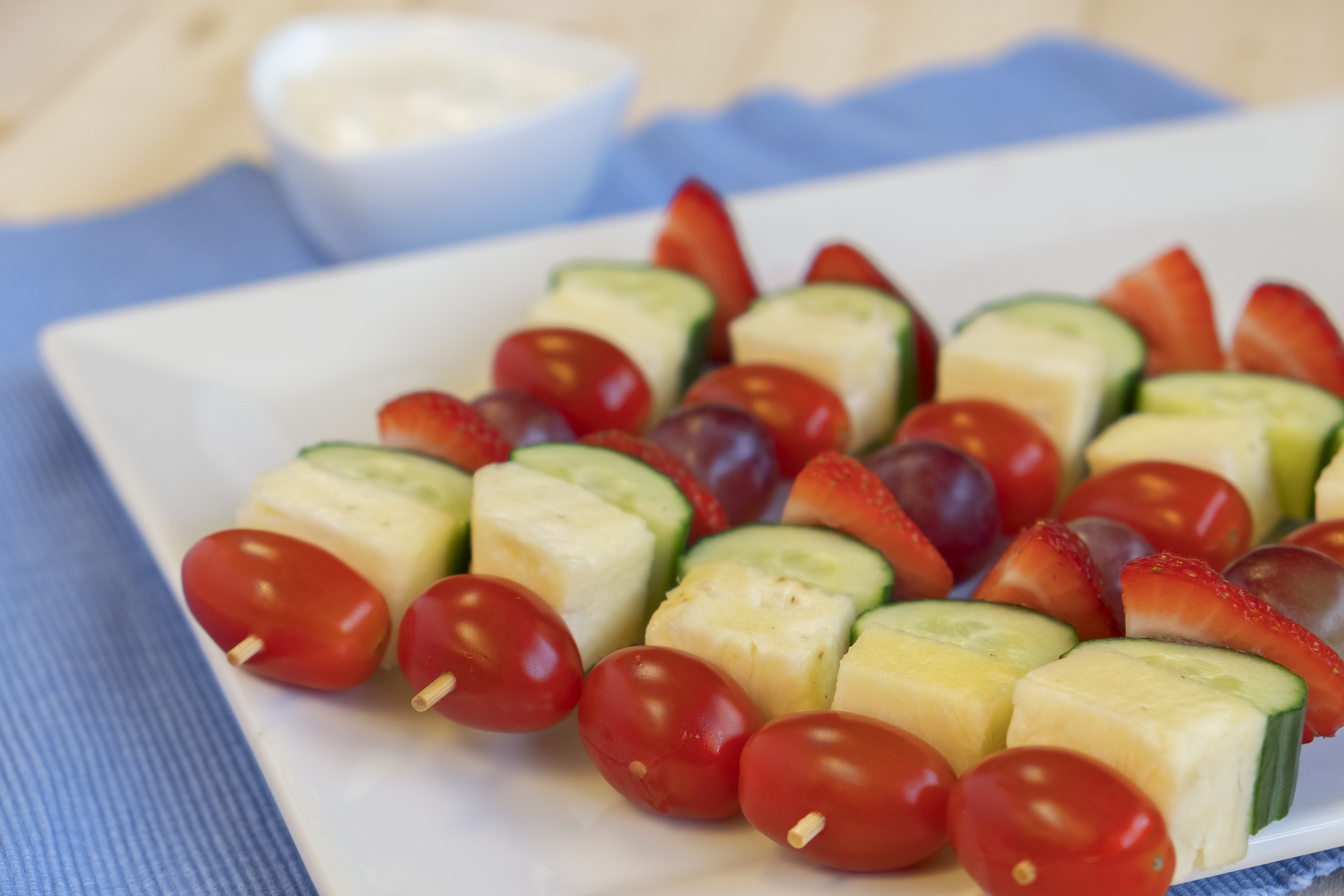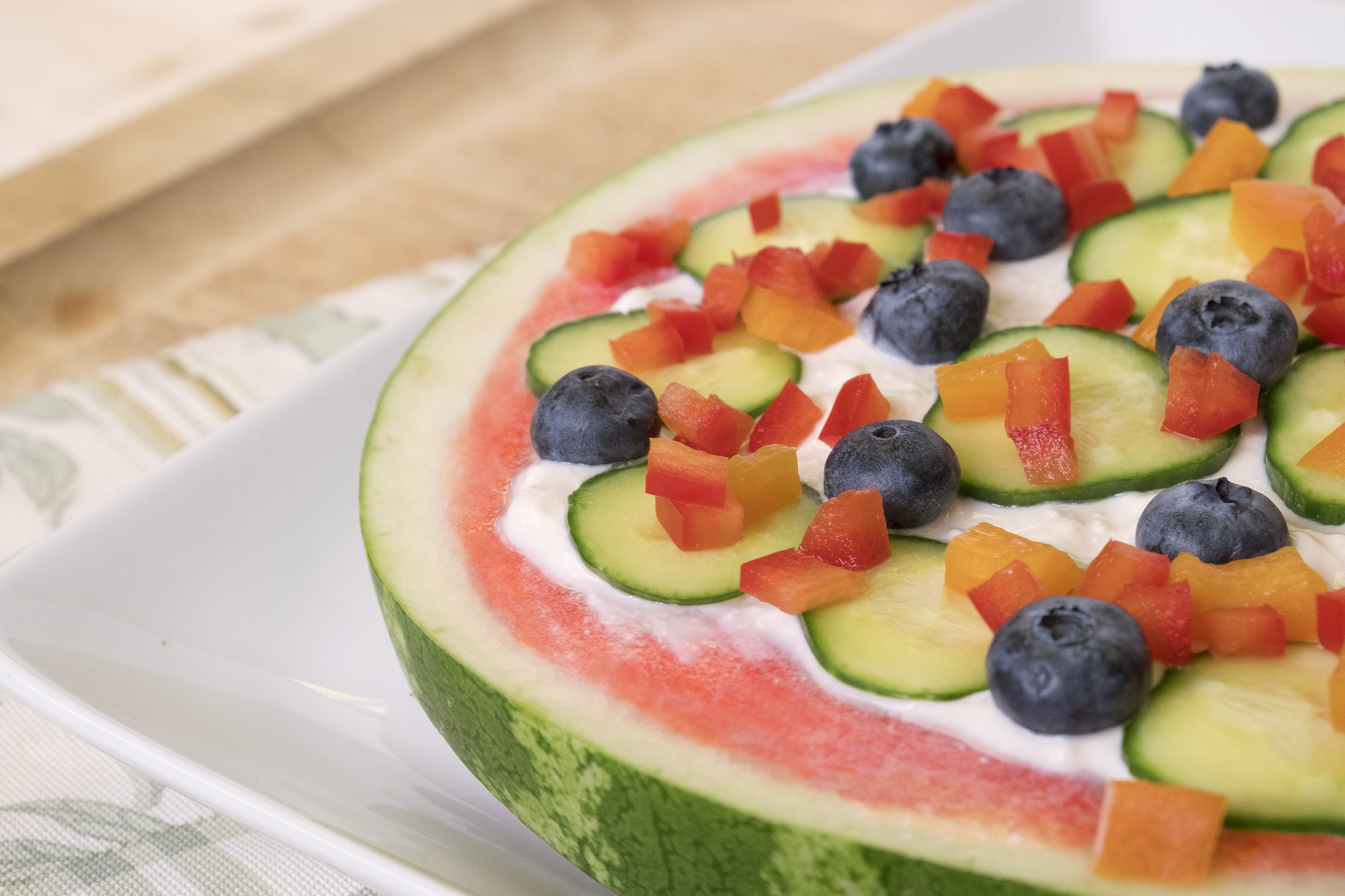By: Lola O’Rourke
As kids return to school, family routines become more structured – not just schedule-wise, but in relation to food and eating too. Not quite so much time for lazy breakfasts, and no access to the nearby kitchen for grabbing lunch or a quick snack. A bit more planning is called for. Just as you plan ahead so that needed school supplies and clothes are on hand, it’s important to do some food planning too. After all, the foods our kids eat provide the energy and nutrients they need to function at their best, both mentally and physically.
What to Eat?
Here’s a refresher on what your kids’ (and the whole family’s) overall diet ought to look like.

• Follow this guide and your kids will be on the right track to get the nutrition needed for optimal energy, staying healthy, and growing well too. Each group provides different nutrients the body needs. Choose different foods from within each group, from meal to meal and from day to day. Variety not only keeps meals and snacks interesting, but makes for better nutrition too.
• Filling half of every plate with fruits and vegetables gets everyone off to a great start. Include a wide variety of colors, and make fruits and vegetables a regular go-to food for snacking too.
• When it comes to grains, choose whole grains about 50 % of the time. These provide more fiber, vitamins, and minerals compared to their refined counterparts. More and more glutenfree products are made from whole grains now, including crackers, breads and pastas. Has your family tried millet or quinoa as a side dish yet? And don’t forget about oatmeal (make sure it’s certified gluten-free) and popcorn for whole grain goodness.
• Include some protein in most meals and snacks, for optimal staying power. Remember, its not just meats, fish and chicken which provide this nutrient: nuts, seeds, beans, and dairy foods are good sources too.
Breakfast
Hmmm, sleep or breakfast…sleep or breakfast…. this may be an internal debate the kids in your household have, especially if there are teenagers involved. Sleeping in till the last possible minute might be highest priority for them, but making time for breakfast really is worth the little extra time it takes. It’s hard to run well on empty until lunchtime, and kids are likely to feel and do better all day long if they’ve gotten started with a morning meal. If the usual choices are being met with a yawn of boredom, expend your family’s breakfast horizons. Traditional breakfast in Japan often consists of fish and rice, while a Mexican morning meal may include beans and tortillas along with scrambled eggs: delicious. A great way to jazz up a breakfast routine and save time too is to have last night’s leftovers for breakfast. So whether it’s leftover stir-fry, fish, beans, or a standby bowl of cereal, getting fuel in the tank before heading out the door is a good routine to establish.

Lunch
Schools are doing more to cater to gluten-free kids these days, but packing a lunch is always a good option. Keep in mind the approximate proportions shown in “MyPlate” (see previous page) when packing lunches too. The protein and grain groups may be combined in a sandwich or wrap and the “plate” rounded out by items like carrot and bell pepper sticks and an apple. While standbys like sandwiches are a handy option, remember to branch out too. Use a thermos for taking chili, soup or pasta for lunch. Leftovers (if not eaten for breakfast!) can work great in a lunchbox too.
Planning and making lunches with your kids is a great opportunity for them to get actively involved in their gluten-free diet. Brainstorm options and let them take ownership of lunchtime planning. (Who knows, they may be cooking dinner for the whole family before long!)

Drinks
What we drink matters too. Make water the drink of choice throughout the day. Always available and refreshing, water doesn’t load us up with unhealthy excess sugars, like many other types of drinks tend to do. Have your kids keep a water bottle in their backpack so it’s always on hand. At mealtime, milk or water are generally the best options. For those who don’t consume dairy, there are plenty of non-dairy “milk” drinks available to choose from, such as almond, rice, coconut, and soy milks. Try to choose low-fat cow’s milk, and when having non-dairy milks, choose unsweetened or lower sugar versions.
Snacks
Sometimes just the word “snack” makes us think that nutrition isn’t part of the equation.
After all, isn’t that what meals are about? Well, that’s only part of the story. Meals may be when we get most of our fuel, and sure it’s okay to have snacks that are more focused on fun and flavor some of the time. Remember, though, that snacks are really just mini-meals and are great opportunities to top off the tank with good quality fuel to keep kids going strong until lunch or dinner. Who says that just because it’s high quality fuel, it can’t be fun and full of flavor too? To have the most fun while snacking AND in the activities they’re fueling up for, here are a few ideas for working “higher octane” foods into kids’ snacking routines:
- With crackers or chips, add strips of green pepper and cucumber slices, along with a few cheese slices. Or, add in veggie sticks and hummus.
Accompany tortilla chips with a generous serving of salsa or hummus. - If cookies are a favorite, go with the classic combo and have a glass of milk alongside. When possible, opt for more nutritious cookie varieties like oatmeal (made with certified GF oats) or peanut butter. Also, keep an eye out for higher protein cookies, which are becoming more and more available these days.
- You get the idea…. It’s okay for kids to have some “lower octane” favorites; just have them add in a bit of higher octane fuel too, for great taste AND good staying power!
Talk to your kids about these guidelines, do some creative meal planning and food preparation together (it can be fun!), help them (if needed!) get up in time for breakfast, and always have healthy foods on hand in the household. They’ll be off to a good start not only for this school year, but also for all their gluten-free years ahead.
For tasty, gluten-free recipes please see the following:



